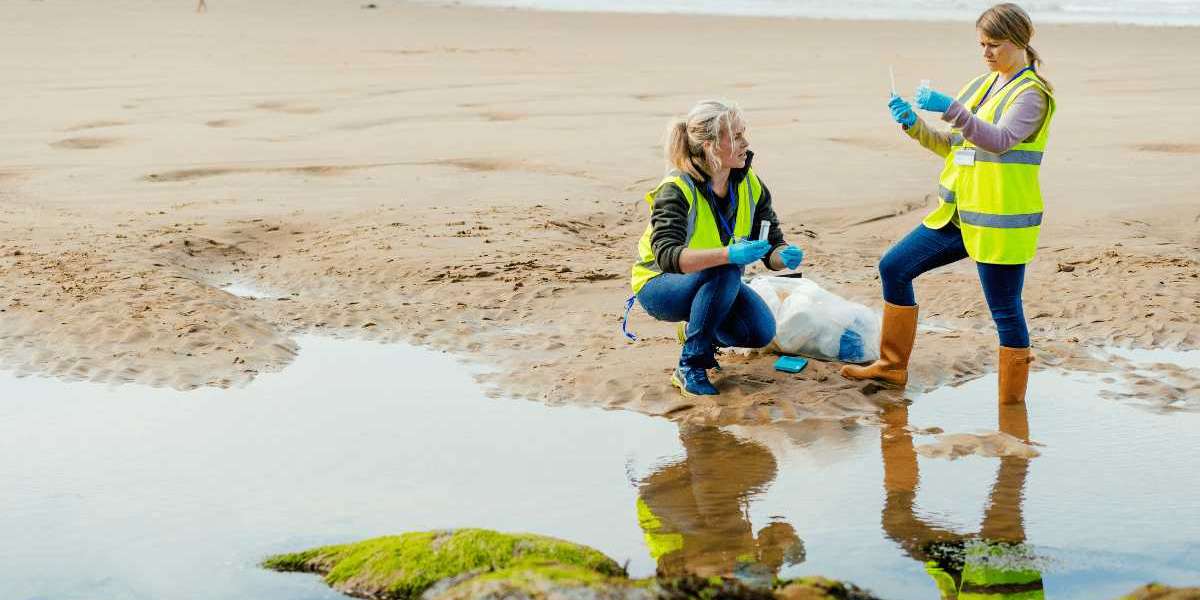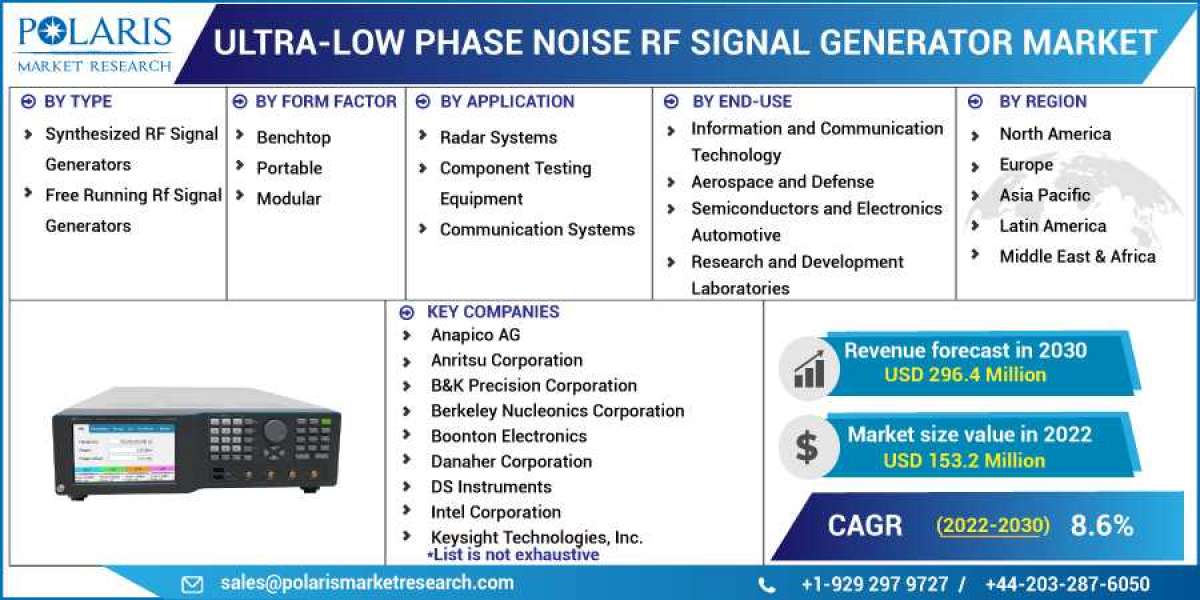The Environmental Impact Assessment (EIA) process plays a vital role in Malaysia's sustainable development goals by ensuring that significant projects undergo thorough environmental scrutiny. EIA aims to identify potential environmental impacts and propose mitigation measures to minimize harm. This process helps decision-makers assess the feasibility of proposed projects and make informed choices that align with environmental protection and socio-economic needs.
The purpose of EIA in Malaysia is to ensure that development takes place in an environmentally responsible manner. It requires project proponents to evaluate the potential environmental consequences of their activities and propose appropriate mitigation measures. By conducting EIA, developers can identify and address potential negative impacts on sensitive ecosystems, communities, and resources.
Importantly, EIA in Malaysia is a dynamic process that emphasizes stakeholder engagement and collaboration. It brings together various stakeholders, including government agencies, local communities, and non-governmental organizations, to provide input, express concerns, and contribute to the decision-making process. Their involvement promotes transparency, accountability, and sustainability in project planning and implementation.
With the help of expert environmental consultants, who possess expertise in various disciplines, the EIA process ensures that projects strike a balance between economic growth and environmental conservation. By adhering to the EIA process, businesses can navigate regulatory requirements, improve their environmental performance, and gain public trust. The EIA process in Malaysia exemplifies the country's commitment to sustainable development and responsible project management.
EIA Innovation: Trends and Implementation Tips
As the field of Environmental Impact Assessment (EIA) evolves, innovative trends are emerging to enhance the effectiveness and efficiency of the process in Malaysia. By adopting these trends, businesses and environmental consultants can ensure compliance, drive sustainability, and optimize outcomes. Let's explore some of the current trends and implementation tips in EIA.
Integration of Digital Technologies
Digital transformation is revolutionizing the EIA process, enabling faster and more accurate assessments. Geographic Information Systems (GIS) and remote sensing technologies play a crucial role in data collection and analysis, allowing for better assessment of environmental impacts. These tools help identify sensitive areas, assess potential risks, and support decision-making processes. Environmental consultants can leverage innovative digital solutions to streamline assessments, such as online platforms for stakeholder engagement and feedback loops for data validation.
Circular Economy Principles
The integration of circular economy principles in EIA promotes sustainable development and minimizes environmental impact. By adopting practices that prioritize resource efficiency, waste reduction, and the reuse of materials, businesses can optimize their operations. Environmental consultants can guide organizations in implementing circular economy solutions, such as closed-loop systems and sustainable supply chains. These initiatives promote a more sustainable approach to project development, ensuring that adverse effects are mitigated, and social benefits are maximized.
Stakeholder Collaboration
Effective engagement of stakeholders is key to a successful EIA process. Collaborating with local communities, indigenous groups, NGOs, and relevant government agencies fosters transparency and enhances decision-making. Environmental consultants can facilitate stakeholder collaboration by implementing participatory approaches, conducting workshops, and creating dialogue platforms. By involving stakeholders at every stage of the EIA, their insights and concerns are taken into account, leading to more informed and inclusive decision-making.
Implementation Tips
To implement these trends effectively, businesses and environmental consultants should consider the following tips:
- Stay updated with the latest advancements in digital technologies and their applicability to EIA.
- Foster a culture of innovation within the organization, encouraging the adoption of new tools and techniques.
- Develop strong partnerships with technology providers, ensuring access to cutting-edge solutions.
- Undertake capacity-building activities to enhance the skills and knowledge of EIA practitioners in utilizing digital tools.
- Establish clear communication channels and regular engagement with stakeholders to build trust and facilitate collaboration.
By embracing these innovative trends and implementing best practices, businesses and environmental consultants can elevate the quality and impact of EIA processes in Malaysia. Through the integration of digital technologies, circular economy principles, and stakeholder collaboration, EIA becomes a catalyst for sustainable development, ensuring a brighter future for both the environment and society.
Digital Transformation in EIA
Digital transformation has revolutionized various industries, and the Environmental Impact Assessment (EIA) process is no exception. By leveraging digital tools and technologies, environmental consultants in Malaysia are transforming the way EIAs are conducted. These innovations not only enhance the efficiency and accuracy of the assessment but also enable organizations to make informed decisions based on reliable data.
Geographic Information Systems (GIS)
Geographic Information Systems (GIS) play a crucial role in EIA by allowing consultants to collect, analyze, and visualize spatial data. GIS technology enables the integration of various datasets, ranging from land cover and topography to biodiversity and socioeconomic factors. By overlaying these datasets, environmental consultants can identify potential areas of environmental sensitivity and assess the impact of proposed projects accurately.
One example of a digital solution that utilizes GIS is the development of interactive maps. These maps provide stakeholders with an accessible platform to explore project sites and understand the potential environmental implications. Through the use of overlays and layers, the maps can display data such as protected areas, water resources, and sensitive habitats, facilitating better decision-making and stakeholder engagement.
Remote Sensing
Remote sensing techniques have revolutionized the data collection process in EIA. Through the use of satellites, drones, and airborne sensors, environmental consultants can gather high-resolution imagery and capture valuable environmental data. This data can include land use changes, vegetation cover, and even air quality parameters.
For instance, satellite imagery can provide valuable insights into land use changes over time, aiding in identifying trends and patterns that can influence the environmental impact of a project. Drones, on the other hand, can capture detailed imagery of project sites, even in hard-to-reach or hazardous areas. This on-the-ground perspective allows consultants to assess potential risks and environmental sensitivities accurately.
The integration of digital technologies, such as GIS and remote sensing, has not only streamlined the EIA process but also enhanced the accuracy and reliability of the assessment. By harnessing the power of these digital tools, environmental consultants can provide comprehensive and data-driven insights into the environmental impact of projects, enabling organizations to make informed decisions that balance economic growth with sustainability.
Circular Economy Integration in EIA
Incorporating circular economy principles in the Environmental Impact Assessment (EIA) process is crucial for minimizing environmental impact and promoting sustainability. By adopting a circular approach, businesses can optimize resource use, reduce waste generation, and foster a more sustainable economy. This section will discuss the importance of circular economy integration in the EIA process and provide examples of circular economy solutions that demonstrate its potential to minimize environmental impact.
Importance of Circular Economy Integration
Integrating circular economy principles in the EIA process ensures that environmental concerns are addressed holistically. By considering the entire lifecycle of a project, from resource extraction to disposal, circular economy integration aims to close the loop and minimize waste generation.
One key benefit of circular economy integration in EIA is the reduction of resource consumption. By promoting resource efficiency and recycling, businesses can minimize the extraction of raw materials and reduce the associated environmental impacts. For example, a construction project could adopt circular economy principles by incorporating recycled materials or reusing existing structures, thereby reducing the need for new resource extraction.
Furthermore, circular economy integration can lead to the development of innovative solutions that minimize environmental impact. For instance, a manufacturing plant could implement a closed-loop production system, where waste materials from one process are used as inputs for another process. This not only reduces waste generation but also conserves resources and reduces the demand for new raw materials.
Examples of Circular Economy Solutions
Several circular economy solutions can be applied in the EIA process to minimize environmental impact:
- Waste-to-Energy Systems: These systems convert organic waste into energy through processes like anaerobic digestion or incineration. By capturing the energy potential of waste materials, these systems simultaneously reduce waste volumes and generate renewable energy.
- Product Design for Circularity: Designing products with recyclability and reusability in mind can facilitate the circular flow of materials. This includes using easily separable components and incorporating recycled materials during the manufacturing process.
- Closed-loop Water Management: Implementing water recycling and reuse systems can reduce the demand for freshwater resources. This approach ensures that water is treated and reused within a project, minimizing the need for extraction and discharge.
- Collaborative Waste Management: Encouraging collaboration between different stakeholders, such as manufacturers, suppliers, and waste management facilities, can enable the efficient utilization of waste materials. By establishing networks for waste exchange and recycling, businesses can reduce waste disposal and promote resource recovery.
Incorporating circular economy principles in the EIA process not only minimizes environmental impact but also promotes the efficient use of resources and fosters sustainable development. Environmental consultants play a crucial role in guiding businesses towards effective circular economy integration, considering factors such as waste management, resource efficiency, and the potential for collaboration with stakeholders.
Stakeholder Collaboration and Engagement
Engaging stakeholders is crucial in the Environmental Impact Assessment (EIA) process in Malaysia as it ensures that the concerns and perspectives of all relevant parties are taken into account. Effective stakeholder collaboration enhances the quality and legitimacy of the EIA outcomes, facilitating sustainable development and decision-making. Here are some methods and examples of stakeholder collaboration in the EIA process:
- Early Involvement and Consultation
Engaging stakeholders from the early stages of the EIA process fosters transparency and inclusivity. This allows for the identification of relevant stakeholders and their concerns, ensuring their perspectives are incorporated into the assessment. Meaningful consultations can take place through public meetings, focus groups, workshops, or online platforms, providing opportunities for stakeholders to voice their opinions, ask questions, and contribute to decision-making.
- Participatory Approach
Adopting a participatory approach encourages stakeholders' active involvement in the EIA process. This can be achieved through collaborative workshops, joint fact-finding exercises, or participatory assessment techniques. Such approaches empower stakeholders by making them co-creators and co-owners of the EIA process, increasing their sense of ownership and commitment to the project's environmental management.
- Collaboration with NGOs and Community Groups
Engaging non-governmental organizations (NGOs) and community groups helps bridge the gap between project proponents and affected communities. These organizations often possess valuable local knowledge and represent the interests of marginalized communities. Collaborating with NGOs and community groups creates opportunities for mutual learning, trust-building, and the identification of potential environmental and social impacts.
- Multi-stakeholder Platforms and Working Groups
Establishing multi-stakeholder platforms or working groups brings together a diverse range of stakeholders, including government agencies, industry representatives, community leaders, and environmental experts. Such platforms facilitate dialogue, exchange of information, and joint problem-solving. They can play a crucial role in finding common ground, addressing conflicts, and collectively developing strategies to mitigate environmental impacts.
- Continuous Communication and Feedback Loop
Maintaining open and transparent communication channels with stakeholders throughout the EIA process is essential. Regular updates, progress reports, and feedback mechanisms ensure that stakeholders are informed and feel valued. A feedback loop allows for the evaluation and incorporation of stakeholder inputs, contributing to better environmental management decisions and improved outcomes.
Effective stakeholder collaboration and engagement in the EIA process not only enhances the credibility and acceptance of the assessment but also promotes sustainable development and the protection of environmental resources. By valuing stakeholder perspectives and facilitating their meaningful participation, environmental consultants can drive positive change and ensure the EIA process delivers robust and effective results.
Adaptive Management Techniques
Adaptive management is a dynamic and iterative approach employed in the Environmental Impact Assessment (EIA) process to address changing needs and improve outcomes. It recognizes that the understanding of environmental impacts and their mitigation can evolve over time, and therefore, allows for flexibility in decision-making and project management. Here are some techniques commonly used in adaptive management within the EIA context:
- Monitoring and Evaluation:
Regularly monitoring and evaluating the environmental indicators and project performance helps identify any deviations or unexpected impacts. This process enables project managers and environmental consultants to assess the effectiveness of mitigation measures and adjust them if necessary. By collecting accurate data and conducting thorough assessments, potential environmental risks can be identified early on, allowing for timely interventions.
- Contingency Planning:
Developing contingency plans is crucial to address unforeseen circumstances that may arise during project implementation. These plans outline alternative strategies or actions that can be executed if initial approaches are not achieving the desired outcomes. By having contingency plans in place, project managers and environmental consultants can promptly respond to emerging challenges and minimize potential negative impacts.
- Stakeholder Engagement:
Engaging stakeholders throughout the adaptive management process fosters collaboration and promotes shared responsibility. By involving relevant stakeholders, including local communities, NGOs, and government agencies, a wider range of perspectives and knowledge can be integrated into decision-making. This participatory approach ensures that diverse interests are considered and enhances the legitimacy and credibility of the EIA process.
- Adaptive Monitoring Design:
Adaptive monitoring design involves continuously assessing the effectiveness of monitoring protocols and adjusting them if needed. This includes evaluating the frequency and methods of data collection, as well as the parameters being measured. By refining monitoring design based on real-time feedback and emerging information, the accuracy and reliability of collected data can be improved, resulting in better-informed decision-making.
- Learning and Knowledge Exchange:
Emphasizing a process of learning and knowledge exchange among project stakeholders is essential in adaptive management. By promoting open dialogue and sharing experiences, valuable insights and lessons learned can be captured and integrated back into the EIA process. This collaborative learning approach helps build a coherent framework and enhances the efficiency of mitigation strategies.
Incorporating adaptive management techniques into the EIA process empowers environmental consultants and project managers to respond effectively to changing needs and challenges. By embracing flexibility, continuous learning, and stakeholder engagement, adaptive management ensures that projects navigate potential hurdles while maximizing positive environmental outcomes.
Strategic Integration of EIA
Strategic planning and integration are essential components of the Environmental Impact Assessment (EIA) process, ensuring sustainable development and meeting regulatory requirements. By seamlessly incorporating EIA into business processes, organizations can proactively address potential environmental risks, minimize adverse impacts, and maximize social and economic benefits.
Benefits of Strategic Integration
- Sustainable Development: Strategic integration of EIA enables businesses to align their operations with sustainability goals. It helps identify opportunities for resource optimization, waste reduction, and eco-friendly practices that contribute to sustainable development.
- Regulatory Compliance: Integrating EIA into business processes ensures compliance with environmental regulations and standards. This strategic approach helps businesses navigate complex legal frameworks and avoid potential penalties or delays.
- Risk Management: By considering environmental risks and impacts in the early stages of project planning, strategic integration of EIA enables effective risk management. It allows businesses to identify potential challenges, develop mitigation measures, and ensure a resilient and responsible approach.
Process of Strategic Integration
- Recognition of the Need: Businesses need to recognize the importance of integrating EIA within their strategic planning processes. This involves understanding the potential impacts of their activities on the environment and society.
- Coherent Framework: Developing a coherent framework for integrating EIA involves defining clear roles and responsibilities for different stakeholders, establishing channels for communication and collaboration, and ensuring adequate resources for implementation.
- Integration into Decision-Making: EIA should be integrated into the decision-making process at all relevant stages. This ensures that potential environmental impacts are considered alongside economic and social factors, enabling informed and balanced decision-making.
- Collaboration and Stakeholder Engagement: Strategic integration encourages meaningful collaboration and engagement with stakeholders. By involving local communities, NGOs, and other relevant parties, businesses can address concerns, incorporate diverse perspectives, and build credibility and trust.
- Continuous Improvement: Strategic integration of EIA involves a continuous improvement approach. This includes monitoring and evaluating the effectiveness of mitigation measures, incorporating feedback from stakeholders, and adapting strategies to changing circumstances or new information.
By strategically integrating EIA into business processes, organizations can drive sustainable development, mitigate environmental risks, and demonstrate their commitment to corporate social responsibility. The collaboration between environmental consultants and businesses plays a pivotal role in achieving these objectives.
Capacity Building for EIA Practitioners
Capacity building activities play a critical role in enhancing the skills and knowledge of Environmental Impact Assessment (EIA) practitioners in Malaysia. By investing in continuous professional development and training, these practitioners are better equipped to navigate the complexities of the EIA process and ensure high-quality assessments.
One example of capacity building initiatives is the organization of workshops and seminars, where EIA practitioners can learn about the latest regulatory changes, best practices, and innovative approaches in the field. These events provide valuable platforms for knowledge exchange and networking among professionals, fostering a community of practice dedicated to EIA.
Additionally, capacity building programs focus on skill enhancement in areas such as data analysis, impact assessment methodologies, stakeholder engagement techniques, and strategic integration of EIA within business processes. EIA practitioners are trained to effectively collect, analyze, and interpret data to assess environmental impacts accurately.
Furthermore, capacity building initiatives aim to improve understanding of community engagement and the expectations of different stakeholder groups. EIA practitioners learn how to actively involve stakeholders throughout the assessment process, ensuring their concerns and perspectives are considered in decision-making. This participatory approach not only enhances the credibility of the EIA but also increases stakeholder satisfaction and buy-in.
The impact of capacity building activities on the quality of EIA assessments cannot be overstated. Well-trained practitioners can contribute to the identification of potential environmental risks, formulation of effective mitigation measures, and the sustainable development of projects. This, in turn, leads to better outcomes in terms of environmental protection, social benefits, and corporate social responsibility.
Overall, capacity building activities empower EIA practitioners with the necessary skills, knowledge, and adaptability to effectively carry out assessments. By investing in their professional development, Malaysia's EIA practitioners contribute to the continuous improvement and evolution of the EIA process in the country.
Conclusion
The implementation of innovative strategies in Environmental Impact Assessment (EIA) in Malaysia, such as digital transformation, circular economy integration, stakeholder collaboration, and adaptive management, have revolutionized the process and enhanced its effectiveness in achieving sustainable development goals.
Key Takeaways:
- Environmental consultants play a crucial role in streamlining the EIA process for businesses and ensuring compliance with regulations.
- Integration of digital tools, like geographic information systems and remote sensing, has improved data analysis and decision-making in EIA.
- Circular economy principles emphasize minimizing environmental impact through resource efficiency and closed-loop systems.
- Stakeholder collaboration and engagement are essential for successful EIA outcomes, promoting transparency and addressing diverse perspectives.
- Adaptive management techniques allow for flexibility and responsiveness to changing needs and improve the overall effectiveness of EIA.
- Strategic integration of EIA within business processes optimizes sustainability efforts and ensures regulatory compliance.
- Capacity-building initiatives enhance the skills and knowledge of EIA practitioners, improving the quality and credibility of EIA reports.
Remember, staying up-to-date with the latest trends and best practices in EIA is crucial for sustainable development and environmental stewardship.








